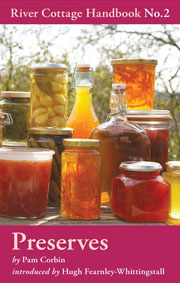Growing chilli peppers is like any form of gardening, before too long your plants will pick up some sort of pests or disease. The causes can be wide ranging however once you know what to look out for the cures are often simple. In this article we’ll look at some of the more common problems your plants may face.
Slugs & Snails
These are often the worst enemies of chillie growers. There is nothing more that slugs and snails like more than to tuck into a young juicy chilli plant. Tell tale signs (apart from the obvious slime trails) are that young branches near the base of the plant have been stripped away overnight or parts of leaves (often the centre) have been munched away.
Both kinds of mollusks prefer dark damp places to live so some simple housekeeping around the garden can deter them living near your plants. Try to keep areas around the base of your plants free from fallen leaves that have a tendency to rot. Climbing ivy is another favoured hiding place so try to trim back at the bottom of walls where the ivy meets the ground.
There are various methods to combat these pests including the traditional slug pellets. However these can be harmful to any birds that eat the poisoned pellets so a more organic approach may be better. That said there are quite a few organic slug pellets entering the market now which are much safer for pets and wildlife.
You can try beer traps – simply half fill a cup with beer (not lager) then bury the cup in the soil near your chilli plants so the rim is level with the ground. At least with this method they should die happy!!
Copper is known to repel slugs and snails because it produces a very slight electric charge that they hate. You can purchase copper rings to place around the base of plant pots or can place copper tubing or piping round you raised beds. The slugs and snails can’t stand it so much they avoid crawling over to get to your chilies and will head off elsewhere in search of food. The downside to this is that copper piping or rings can be expensive, however once purchased it should last you for years.I have had very good success using this method.
Another potential deterrent to use are egg shells sprinkled around the base of your plants. Slugs supposedly hate crawling over the shells. Another method that has had mixed results for me is to sprinkle used coffee grounds around the base of the plants. This is not only a snail deterrent but it helps add much needed nitrogen to the soil, aiding your pepper plants growth.
Another very effective method, if more time consuming is to go on regular snail hunts. If you can spare the time head out just after dark armed with a torch as this is the best time to catch the enemy on the move. If you have a root around in and around the chillie plants you’ll be amazed how many you find. Once you find them you have two options – relocate them somewhere else or end their chillie eating once and for all.
Slugs and Snails are both hermaphrodites (they can reproduce on their own without a mate) and also can lay huge numbers of eggs.This means a single mollusk amongst your chillie plants can soon lead to a whole army feasting on your chillie seedlings you’ve been carefully nurturing over the spring. As a result it is crucial that any treatment or action is not just a one off. If you continue you snail hunts every night for a week or two you should make a serious dent in the population and from then on less frequent hunts (once a week) should keep them at bay.
Update: We’ve put together a more detailed article on Slugs and Snails that may be on interest.
Aphids
These tiny creatures can infest your plants at any time during the growing season. They look like tiny white specks and tend to gather around the shoot tips, flower buds and all over younger leaves. At first glance they can look like some form of fungus however if you take a much closer look each speck will have legs! Aphids also leave a sticky white residue on leaves that they have been feeding on. Again this is easily mistaken for fungus. As mentioned the aphids tend to attack and feed on the new growth of the plants resulting in stunted or deformed growth.
 image by dullhunk
image by dullhunk
There are many not so friendly chemical sprays on sale to treat or kill aphids. An easy solution is to spray a very weak soap solution onto you chillie plants. This works well however if you have to keep spraying the plants too often it can affect their growth. Lady birds and hover flies are natural predators of aphids. Trying to attract them into your garden is a great way to naturally control the pests. Planting bright flowers, marigolds work particularly well in and around your chillies is a great way to attract these bugs.
If you are more desperate you can even purchase ladybirds from some internet sites and simply release them onto you plants for an immediate aphid feast! A more sustainable option is to install a ladybird nest box into your garden.
Mold & Rot
These kinds of problem can occur with any type of plants. Symptoms can be anything from mold on the leaves to brown, sot fruit, fungus around the stems. The usual causes are irregular or over watering, over crowding of plants or poor ventilation. As is the case when growing any plants, leave plenty of space between chillie plants, keep them well ventilated (especially if growing inside) and water regularly but not too often. If you get the balance right you should avoid these kind of problems quite easily.





